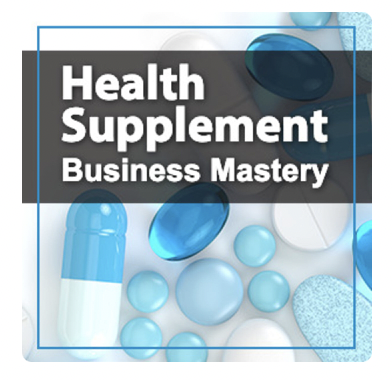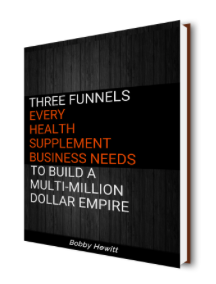 Online testing is the quickest way to get more revenue and growth from your existing website visitors and leverage your efforts in other areas such as PPC, email marketing and other traffic and revenue driving activities in your business.
Online testing is the quickest way to get more revenue and growth from your existing website visitors and leverage your efforts in other areas such as PPC, email marketing and other traffic and revenue driving activities in your business.
So why do so few companies actually do it or do it well?
Well, first of all it’s an industry that’s still in it’s infancy and only really smart marketers know about it. Essentially it’s where SEO was 10-15 years ago. But I think it will be where SEO is now in the next 5 years.
Secondly the name itself keeps changing. Conversion Rate Optimization, CRO, Marketing Optimization, Growth Hacking. It’s all the same thing but with so many different names out there it’s adding confusion to the ecosystem and marketers can’t keep up, much less follow along with the trends and current sophistication of online marketing.
Third, the terminology itself is confusing. When people hear the word Optimization, they think Search Engine Optimization, SEO, not CRO. Yet it’s completely different. The total opposite in fact. SEO drives traffic, CRO exponentially drives more sales.
And finally, dispite how easy it seems, it’s really hard to do CRO well.
It requires marketing to be truly customer centric. And the desire to continually learn and improve. More importantly it requires you to be Ok with taking risks for the sake of learning that can be applied to leverage bigger gains to build a stronger more robust company for the future.
Despite all of the hurdles. It’s very easy to start a test and in the end it’s the most powerful lever a business can push to gain massive improvement to the bottom line.
One of my CRO heroes has this to say:
“Most websites don’t have a massive traffic problem, however every website in the world has a conversion problem.”
(Source: Bryan Eisenberg)
So how do you get started?
There are a ton of testing tools out there that make it very easy for anyone to get started testing.
Here are just a few:
The accessibility and ease of these tools is a double edged sword. It’s easy to jump in but it’s also easy to get lost.
The problem most marketers struggle with is not the tools but knowing what to test, how to properly test and how to get the biggest impact.
Ask yourself these 4 key questions to keep your tests on track to more profits.
- Who are you trying to effect? (Really define your target audience and what makes them tick. The best way to do this is to listen.)
- What action do you want them to take?
- How do you define a conversion and how will it be tracked?
- What action do THEY want to take? This is not always the same as #2
Now that you’re starting to think holistically let’s roll up our sleeves and get to work.
Here are just a few ideas for you to test to get started with AB Testing.
Test #1 – A/B Test Your Opt-In
The days of just asking for an email with nothing in exchange but updates or a newsletter are gone.
You really can’t build a list like that any more.
There are too many people competing for attention and people don’t care about you.
Nowadays, you need a “lead magnet” or some offer to get any traction at all with list building.
A lead magnet is A small “chunk” of value that solves a SPECIFIC problem for a SPECIFIC market that is offered in exchange for an opt-in.
Here are some tests you can do to build your list to get you started:
- Test having your opt in offer as part of your page vs. delivered in a light box overlay. (I’ve found in tests I’ve done that light boxes perform better.)
- Test showing an image of your lead magnet, like the cover to a report vs. no image. Or test different images. (I’ve found that images that appear to be more tangible like a #D image of a digital asset vs. a flat image perform better.)
- For the more advanced optimizers, test the actual lead magnet itself. First by testing the title then by changing the magenta to a completely different offer.
Test #2 – A/B Test Your Testimonials
The natural instinct is to place testimonials in a prominent position as close as possible to the product as possible.
If your designer is not savvy about conversion optimization they usually place testimonials in what ever blank open spots exists after they design all the other elements.
In long sales letter pages, I’ve seen testimonials placed haphazardly, just to break up the copy.
In a recent test I completed for a client, the position of the testimonials was tested, which increased conversions by 162.37% with a 99.9% confidence level.
The insight from this test was that the position of the testimonials mattered a lot since the exact same testimonials were tested previously and lost in a different position.
If you think of the page as a conversation with the visitor your testimonials should go right at the point where they have doubt.
Another place you can test them is as close to the decision point as possible.
Not the actual buy or add to cart button but the point on the page where your visitor has enough information to make a decision to buy and needs that little extra push to be reassured.
For the more advanced optimizers, test different testimonials that address the specific concerns your visitors might have.
If there are concerns about trust then test testimonials that specifically address how reliable the company is.
Some other simple testimonial tests you can try include
- Test adding a picture vs. no picture next to the testimonial
- Test adding the location (city and state or country) of the person who submitted the testimonial vs. not having it at all. (sometimes this add more believability as does the picture)
- Test adding a headline quote to the testimonial that sums up the testimonial in one line and makes it easier to read by simply skimming the headlines vs. reading each and every testimonial. You can pull a line from the testimonial it self as the headline and simply put it in quotes above the full text. (You can also test different testimonial headlines, which brings us to test number 3.)
Test #3 – A/B Test Different Headlines
This is the easiest test you can do, at least from an implementation stand point.
Coming up with a good headlines is the hard part.
All of the copy writing masters including Dan Kenedy, Eugene Schwarts, David Ogilvy and more will tell you the job of the headline is to get you to read the first sentence.
This stands to reason that your visitor CAN’T convert into a sale unless he reads your beautifully written copy touting how great your product is.
The headline is the first thing anyone will read and they will make a judgement call on weather to continue reading or not based on the headline alone.
So the headline needs to hook them into reading your copy.
Here are some headline concepts you can test. You’ll have to provide the actual headlines yourself.
- Test a headline that amplifies the problem your target segment is struggling with. (If your product solves multiple problems, then each one of them is an opportunity to test.)
- Test a long headline vs. a short one.
- Test the size of your headline, Big vs. REALLY REALLY BIG (Bigger than your actually comfortable with, when you think it’s big enough make it bigger.)
Test#4 – A/B Test Adding Credibility To Increase Trust
With the ease and ability to simply click away and buy somewhere else online and the proliferation of so many options to buy from or compete with our attention, trust and credibility carry a ton of weight on a decision to buy.
There are many ways to build trust on any web page to help your prospects / visitors buy from you.
Here are just a few a few that you can test:
- Test adding trust seal images, (like a secure lock image, Better Business Bureau, VeriSign, Trust Guard, Geo Trust.)
- Test different trust seals vs others and test the amount of trust seals. Sometimes more is not better.
- Test the position of your trust seals on your page.
- Test having your page secure https:// vs. not http://
Test #5 – A/B Test Adding Urgency To Nudge More Visitors Who Are On The Fence
Urgency is a powerful motivator to get some one to take action.
But you also want to make sure, you’re on the good side of the ethical line for this type of test.
Selling more at the expense of trust is not worth it.
However if you can use urgency legitimately it can be a powerful motivator and provide a big impact to your conversion rate.
Here are some ethical ways to test urgency:
- Test a limited-time price discount where visitors must buy before a certain date in order to qualify for the discount.
- Test adding free bonuses if visitors buy within a certain time period.
- Test limiting the availability of your products or services. (McDonalds did this with the McRib, and Disney does this with every DVD movie release, after a certain time they put it back in the vault and you can’t buy it anymore, or at least until the next special release.)
Test #6 – A/B Test Your Page Layout To Appeal To Attention
The layout of a page is more than just graphic design.
It’s a conversation, telling the visitor what they need to know step by step, and addressing their objections as they arrive.
If you think of layout like that then the job of the layout is to guide the visitor through the conversation.
Here are some layout tests you can easily implement.
- Test a single column layout vs. a two-column layout with the supportive information in the second column.
- Test moving your buying option lower, below the fold. Sometimes having the sales pitch too early in the process can kill conversions. (This is really very dependent on the type of product, the offer and the audience)
Test #7 – A/B Test Your Follow-up Sequence To Maximize Sales Of Repeat Buyers
This is for the advanced marketer:
To maximize your sales you should be segmenting your email list and sending different follow up sequences to each segment.
Here are some quick follow-up email sequence tests you can do:
- Test the frequency of your follow up emails.
- Test the copy in each follow up email.
- Test the number of calls to action in each email. (Not different calls to action but more of the same call to action, just more of the same link, throughout the email.)
Test #8 – A/B Test Your Social Proof
Social proof as described in Robert Cialdini’s six keys to persuasion explained in his 2009 book titled “Influence” is a short cut we use to make decisions.
Here’s a more classical definition: Observing the behavior of those around us provides a convenient mental short cut which simplifies the decision process for us. “We determine what is correct by what other people think is correct” (Lun et al, 2007).
Social proof on a web page might be having a statistic like “Last year alone, Basecamp helped over 285,000 companies…”
So since we use social proof as a short cut to make decisions, the key to it’s success is in how similar we perceive other people to be to ourselves.
Here are some quick social proof tests you can implement today:
- Test not having social proof vs. having it.
- Test the type of social proof. (For example, test having testimonials that look like Facebook style posts.)
Test #9 – A/B Test Removing Elements
There is beauty in simplicity, minimalism and conversion rates…
Sometimes there are too many elements on a page, this is often the case with a landing page but can also be equally true for any page.
Removing elements is one of only three things you can do to any page when it comes to testing.
- Remove
- Add
- Start Over
- Test removing on element at a time
Test #10 – A/B Test Your Copy
If you study any of the grate copywriters like Gary Halbert, you’ll see that direct response copywriting is a powerful tool in and of itself.
But it takes years of dedicated hard work to get as good at copy as the greats or a bankroll to hire some of todays great copywriters. I highly recommend you study them and put in the effort…
But… If you don’t have the time or the money just yet…
Here are some copy tests you can easily implement without a copywriter:
- Test using bold, italics and highlighting (sparingly) to emphasize you most important benefits.
- Test the length of your paragraphs so they look more inviting and easy to read.
- Test adding sub-headlines to emphasize your key messages and compel your visitors to read more. This can also break up your copy. (Your sub-headlines should tell the story on their own. Once added try reading them without the supportive text underneath.)
- Test centering short chunks of text. In a long page copy format this adds importance to those sections because they are different that the other copy on the page and gets visitors to pause.
Discover the 3 funnels that can help your health supplement business succeed.

Listen to the Health Supplement Business Mastery Podcast for for dietary supplement entrepreneurs and marketers.




Great actionable insights for people getting serious about CRO (like me).
I agree that CRO is still really new compared to more established industries like SEO. In fact, I’m going to start writing blog posts about conversions but had trouble finding any high-volume keywords (outside of the obvious ones, like “conversion rate optimization”). Goes to show just how early we are in the game. But it’s an exciting industry to get involved with!
Thanks Brian, I loved your case study on social squeeze pages.
Bobby! Kickass post man. CRO is more than just button color and copy. So glad you went really in depth here. In regards to the lead magnet… we’re actually launching a lead magnet marketplace (think themeforest for lead magnets) and would love your input..
http://www.marketingmarket.net
You can grab a free sample template here (no email optin required) http://www.marketingmarket.net/free
It’s really designed to help people convert more traffic. Would love your opinion man so thank you!
Eric,
A lead magnet marketplace, is a great idea. Something the market needs for sure. Wish you al the best with it.
This is such a valuable advice Bobby! Totally agree with you, CRO requires taking risks constantly, this is a never ending road.
P.S. Thanks for including us 🙂
This is such a valuable advice Bobby! Totally agree with you, CRO requires taking risks constantly, this is a never ending road.
P.S. Thanks for including us 🙂